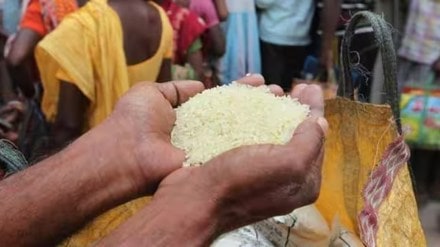To curb domestic prices, the government on Thursday imposed a ban on export of non-basmati white rice with immediate effect. The move would hit global grain supplies, even as it may help contain cereal inflation which has remained in double digits since October last year.
According to a Directorate-General of Foreign Trade (DGFT) order, export of white rice is being shifted to the ‘prohibited’ from the ‘free’ list and the ban also includes semi-milled or wholly milled grains.
India has been the world’s largest exporter of rice over the last decade with more than 40% share in global rice trade. Non-basmati rice accounts for 80% of the total exports of rice. While the export markets are quite diversified, the major markets include Bangladesh, China, Nepal, Iran and most African countries.
“The move is likely to hit 60% of the non-basmati rice shipments and can cause disruption in the global supplies of grains,” V Krishna Rao, president, Rice Exporters Association, told FE.
In FY23, India exported a record 17.78 million tonne (MT) of non-basmati rice worth of $ 6.35 billion and in the first two months of current fiscal, the country has exported 2.84 MT of non-basmati rice, an increase of 6% from the same period previous fiscal.
The prohibition on export of white rice will lead to lowering of domestic prices in the country, an official said.
Retail rice prices rose by 11.78% in June and had been rising in double digit since the beginning of the year. Sources said that the retail rice prices have increased by 3% over the past month.
There has been a 6.3% deficiency in paddy transplanting in the ongoing kharif season so far.
“There is no change in export policy of non-basmati parboiled rice and basmati rice, which forms the bulk of rice exports. This will ensure that the farmers continue to get the benefit of remunerative prices in the international market,” according to a food ministry statement.
Meanwhile, the government has been getting tepid response in the weekly e-auctions of rice by the Food Corporation of India (FCI) under the open market sale scheme (OMSS). On Wednesday, The FCI received bids for 0.1 million tonne (MT) of wheat to be sold to bulk buyers including flour millers and food companies against 0.18 MT offered in its fourth round of weekly e-auction. Since the beginning of the month, the corporation has sold 0.48 MT of wheat and only 470 tonne of rice under OMSS.
According to the DGFT notification, the exports of those consignment of white rice which have been loaded and anchored in Indian ports will be exempted from this ban.
The exports of rice will be allowed for meeting the food security needs of the countries and on the basis of their request, it stated.
In September last year, India had imposed a ban on broken rice exports and put a 20% export tariff on the non-basmati and non-parboiled rice, a measure aimed at improving domestic supplies.
The food ministry stated, in the April-June (2023-24), about 1.5 MT white rice has been exported, which is an increase of around 35%.
“This sharp increase in exports can be ascribed to high international prices due to geo-political scenario, El Nino sentiments and extreme climatic conditions in other rice producing countries, etc,” according to an official note.
The United States Department of Agriculture (USDA) in its July, 2023 crop outlook has stated ‘India remains the lowest priced Asian exporter and it is expected to again be the largest exporter, shipping a record 23 MT in the 2023-24.
India has been the world’s largest exporter of rice since 2012. Currently India exports more rice than the combined shipments of the next three largest exporters – Thailand, Vietnam and Pakistan.
India exports rice to more than 100 countries.
The rice production in the 2022-23 crop year is estimated at a record 135.5 MT.
